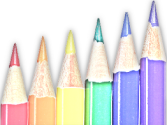Mythology Newspaper....The Trojan Times
Overview
This newspaper is designed as a culminating activity for a unit in which we read an abridged text of The Iliad. We have done some additional research on the characters in the story, so that each student is an expert on one mythological figure and that list is posted in the room. The students are then assigned, by the teacher, to a writing group: news stories, obituaries and births, classifieds, comics, gossip, sports and editorials. The students write for their assigned area, preparing an article, or several entries, that will be published in the newspaper. They can go to the source (The Iliad) or to the participants (those who have done research on Athena could be called Athena for interviews) to put together their facts when producing the story. This provides a great opportunity for students to learn from each other and for each student to be an expert in a given area.
Concepts
- Students learn to cooperate in the sharing of computers.
- Students learn to work as a group, depending on others to provide key bits of information.
- Students work on developing editing skills.
- Students work on information-gathering skills.
- Students learn to use non-standard ClarisWorks functions, like banners, headings and columns.
- Students learn to use computer accessories.
Indicators
- Students develop a two column newspaper as a class.
- Students use texts, graphics, libraries, scanners to produce newspaper.
- Students blend their “sections” together and save as one file so that it can be printed ad distributed as one paper with one copy to each student.
Precomputer
- Students are assigned to research, from two sources, one of the figures from the story. They get the character randomly, by drawing from a hat.
- The students have read The Iliad, or an abridged version.... Actually, this could be done with any myth or collection of myths that students read as a class.
- The students have already written and edited the article or entries they have for the newspaper. I usually assign three or four students to write editorials and they also act as the newspaper editors (just like a real paper), suggesting corrections and ways to reduce the length or expand it. By having student editors, I remove myself totally from the process, making this a student-run and produced paper. I don’t touch anything until the final product is completed and I get to photo-copy a class set.
On the computer
- Assign each group to a computer and give out disks.
- Show students how to do columns and headlines.
- Each student types his or her article into the computer and saves into the same file so that there is one file per group.
- Students who have done cartoons learn to use the scanner and scan in their artwork to be saved and put into the newspaper.
- Students who have written articles can use a picture from the library to illustrate their story, though I have had computer savvy students who drew in the draw program and put that in the newspaper.
- Students save onto their disk. They do editing functions within groups before handing disk to editorial board.
Postcomputer
- Each disk is copied onto the hard-drive of one computer.
- Each file is dragged into a new file so that all are together.
- Editorial board makes adjustments so that the pages have correct pagination and page breaks.
- Editors print a hard copy, edit and make any other changes, consulting with writers as needed.
- Editors turn over the final product to me for photo-copying.
- Student papers are used for evaluation by me.
- Student papers are used as prereading for next year’s students.
Related resources
- ClarisWorks manual
- Literature textbooks
- Research books on mythology

